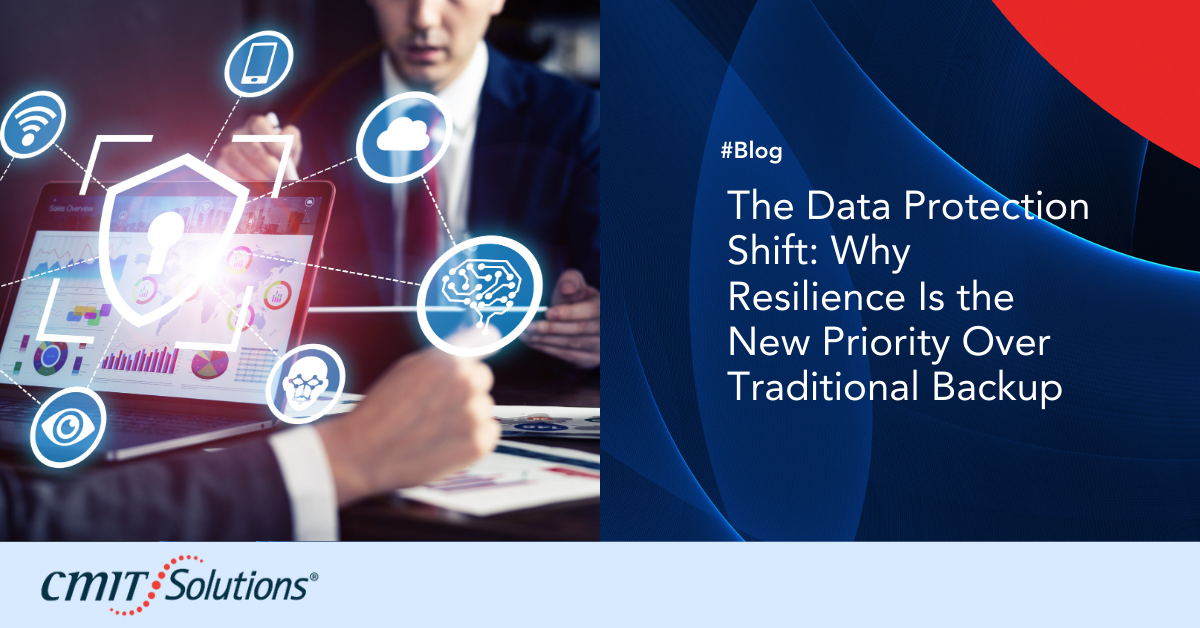Cyberattacks are more aggressive and sophisticated than ever, with one primary target—data. Whether for extortion, fraud, or resale on the dark web, cybercriminals recognize that disrupting access to data can cripple businesses.
For years, backup solutions have been the go-to strategy for data protection. However, traditional backups are no longer enough. Businesses must adopt a resilience-first approach, ensuring that data can be quickly restored with minimal disruption after an attack, system failure, or human error.
Yet, many organizations overlook recovery strategies, assuming that simply having a backup plan is sufficient. In a recent survey, 99 percent of IT decision-makers had a backup strategy, but 26 percent admitted they could not restore all their data when needed.
A true data resilience strategy ensures that businesses can recover critical information, maintain operations, and minimize security risks. This guide outlines how organizations can shift from traditional backups to a resilience-first data strategy.
Why Businesses Must Prioritize Data Resilience Over Backup
Many organizations treat cybersecurity, backup, and data recovery as separate processes, leaving gaps that cybercriminals can exploit.
A resilient data protection strategy integrates:
- Advanced cybersecurity measures to detect and prevent threats
- Automated backup solutions that ensure seamless data recovery
- Proactive business continuity planning to minimize downtime
Businesses that fail to integrate these elements risk extended outages, compliance penalties, and financial losses. A stronger security posture includes cybersecurity measures that detect threats early and prevent breaches before they occur.
Step 1: Make Data Restoration the Foundation of the Backup Plan
A backup strategy is meaningless without a solid recovery plan. Businesses must ensure that critical data can be restored quickly and reliably in the event of a cyberattack, system failure, or accidental deletion.
Key Considerations for Data Restoration
- Identify where critical data is stored—cloud, on-premises, remote devices
- Assess risks if data is lost or corrupted—financial, operational, compliance-related
- Establish RTO and RPO requirements based on business needs
A well-defined business continuity strategy ensures that organizations can restore operations quickly. Companies should incorporate disaster recovery planning to minimize downtime and protect sensitive data.
Step 2: Ensure That Data Is Backed Up in the Right Way
Many businesses assume their cloud provider handles backups, but SaaS data is often left unprotected. A fragmented backup environment can lead to data loss during a ransomware attack or system crash.
The 3-2-1 Backup Rule
A resilient backup strategy follows the 3-2-1 rule:
- Three copies of data (primary, secondary, and offsite)
- Two different storage media (e.g., local server and cloud)
- One offsite backup for disaster recovery
Following this structured approach ensures data is redundant and protected. Businesses implementing cloud solutions can store encrypted backups offsite, reducing the risk of on-premises failures.
How to Protect Backup Data from Ransomware
Cybercriminals often target backup systems first, ensuring victims cannot restore their data without paying a ransom. Organizations should secure backups by:
- Implementing immutable storage to prevent modifications
- Using multi-factor authentication (MFA) for access control
- Encrypting backups to prevent unauthorized access
Companies integrating multi-layered security into their backup strategy significantly reduce data breach risks.
Step 3: Follow Data Recovery Best Practices
Even with regular backups, businesses must test recovery processes to ensure they meet recovery time (RTO) and recovery point objectives (RPO).
Testing the Backup System
- Run simulated recovery drills for various disaster scenarios
- Evaluate the speed and success rate of data restoration
- Ensure authentication tools and encryption keys are accessible
Using automated IT solutions can streamline recovery processes and reduce downtime.
Enterprise-Class Backup and Recovery Solutions
A centralized backup platform ensures:
- Fast, automated restoration of lost data
- Seamless integration across cloud and on-premises environments
- Support for business-critical applications and databases
By investing in IT backup solutions, companies reduce operational disruptions and improve recovery efficiency.
How CMIT Solutions of Oak Park Helps Businesses Achieve Data Resilience
At CMIT Solutions of Oak Park, we specialize in building resilient data protection strategies for businesses of all sizes.
Our Approach Includes:
- Proactive security monitoring to detect threats before they escalate
- Comprehensive data backup solutions tailored to each business
- Business continuity planning to minimize disruption
Whether you need IT guidance or a fully managed data protection solution, we can help.
Final Thoughts: The Future of Data Protection is Resilience
As cyber threats continue to evolve, businesses must move beyond traditional backups and adopt a resilience-first approach. A true data resilience strategy includes:
- Automated backup and recovery
- Proactive cybersecurity
- Business continuity planning
By implementing enterprise-grade security solutions, organizations reduce risk, minimize downtime, and ensure operational continuity.
Ready to secure your data and build resilience against cyber threats? Contact CMIT Solutions of Oak Park today for a customized security assessment and backup strategy review.




